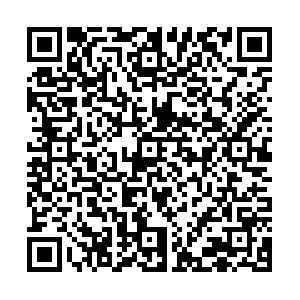Effect of 5 g Salt Reduction Based on Peer Education in Self-management of Elderly Hypertensive Patients in the Community
-
摘要:
目的 探讨基于同伴教育的5 g减盐在社区老年高血压患者自我管理的效果研究,可望控制和降低社区老年人高血压及提高其自我护理能力,使老年高血压患者保持更健康的生活方式,同时为国家老年人高血压的减盐防治提供依据。 方法 本研究采用随机数字法,将云南省昆明市东华和联盟社区中76例60~75岁的高血压正常高值及1、2级患者随机分为实验组和对照组,每组各38例;对照组接受常规高血压健康教育;以社区为依托,实验组于常规高血压教育策略基础上接受基于同伴教育的5 g减盐干预,并在第一、三个月进行实验组分小组制干预随访;比较两组干预前后血压情况、健康行为量表(HPLP-II)、自我护理能力量表(ESCA)、简明健康状况调查量表(SF-36)评分及盐认知程度得分。 结果 干预前2组老年高血压患者HPLP-II、ESCA、SF-36量表得分及盐认知程度评分和高血压情况差异无统计学意义(P > 0.05);干预后实验组患者ESCA量表得分低于对照组(P < 0.05),HPLP-II、SF-36量表得分、盐认知程度评分高于对照组,且高血压控制情况优于对照组(P < 0.05)。 结论 通过对正常高值和1、2级的老年高血压患者实施基于同伴教育的5 g减盐干预,可以有效地控制和降低老年高血压患者的血压值,促进其对食盐的认识和合理摄入及其自我护理,从而养成健康的饮食习惯,改善生活质量。 Abstract:Objective To investigate the effect of 5 g salt reduction based on peereducation in the self-management of elderly hypertensive patients in the community, so as to control and reduce hypertension and improve their self-care ability in the community, enable elderly hypertensive patients to maintain a healthier lifestyle, as well as provide a basis for salt reduction prevention and treatment of hypertension in the elderly in the country. Methods In this study, a random number method was used to randomly divide 76 patients with high-normal blood pressure and grade 1 and 2 hypertension aged 60 ~ 75 years old in Dong Hua and Union Community of Kunming City, Yunnan Province into an experimental group and control group, 38 cases in each group. The control group received routine hypertension health education; based on community, and the experimental group received 5 g salt reduction intervention based on peer education on the basis of routine hypertension education strategy and follow-up intervention in the first and third months. The scores of blood pressure, health behavior scale ( HPLP-II ), self-care ability scale ( ESCA ), concise health status survey scale ( SF-36 ), and salt cognition were compared between the two groups before and after the intervention. Results There was no statistically significant difference in the HPLP-II, ESCA, and SF-36 scale scores, salt awareness score, and hypertension between the two groups of elderly hypertensive patients before the intervention (P > 0.05). after the intervention, the ESCA scale score was lower than that of the control group (P < 0.05), the HPLP-II, SF-36 scale scores, and salt awareness scores were higher than those of the control group, and hypertension The control of hypertension was better than that of the control group (P < 0.05). Conclusion By implementing a 5 g salt reduction intervention based on peer education for elderly hypertensive patients with normal high values and grades 1 and 2, it can effectively control and reduce the blood pressure values of elderly hypertensive patients, promote their awareness and rational intake of salt and their self-care, thereby developing healthy eating habits and improving their quality of life. -
Key words:
- The elderly /
- Hypertension /
- Salt reduction /
- Peer education /
- Effect study
-
表 1 老年高血压患者基本资料比较(n)
Table 1. Comparison of basic information of elderly patients with hypertension(n)
项目 实验组 对照组 n(%) 性别 男 15 17 32(42.1) 女 23 21 44(57.9) 婚姻 已婚 32 35 67(88.2) 离婚、丧偶、未婚 6 3 9(11.8) 月收入(元) < 1 000 4 1 5(6.6) 1 000~ 16 21 37(48.7) 3000~ 15 12 27(35.5) > 5 000 3 4 7(9.2) 血压控制情况 血压控制 29 31 60(79.0) 血压未控制 9 7 16(21.0) 血压分级 正常值 正常高值 15 6 21(27.6) 1级高血压 21 29 50(65.7) 2级高血压 2 3 5(6.7) 3级高血压 0 0 0(0.0) 高血压病程(a) <0.5 7 8 15(20.0) 0.5~ 5 4 9(11.8) 1~ 6 4 10(13.1) 2~ 7 9 16(21.0) 5~ 5 5 10(13.1) ≥10 8 8 16(21.0) 高血压家族史 有 19 15 34(44.7) 无 19 23 42(55.3) 降压药种类 0种 1 8 9(11.8) 1种 17 16 33(43.4) 2种 19 13 32(42.1) 3种及以上 1 1 2(2.7) 注:“−”表示采用精确概率法。 表 2 干预前后HPLP-II得分比较(
$\bar x \pm s $ )Table 2. HPLP-II scores were compared before and after intervention (
$\bar x \pm s $ )时间 实验组(n = 38) 对照组(n = 38) 干预前 110.16 ± 19.38 118.26 ± 20.20 第1次干预 119.05 ± 19.11# 118.58 ± 18.67 第2次干预 129.61 ± 18.87#,* 121.47 ± 18.93 注:经两两比较,与干预前比较,#P < 0.001;与第一次干预比较,*P < 0.001。 表 3 干预前后ESCA得分比较(
$\bar x \pm s $ )Table 3. ESCA scores were compared before and after intervention (
$\bar x \pm s $ )时间 实验组(n = 38) 对照组(n = 38) 干预前 100.13 ± 12.34# 106.00 ± 13.55* 第一次干预 101.47 ± 11.39# 105.68 ± 12.81* 第二次干预 105.84 ± 10.35 108.50 ± 13.19 注:经两两比较,与第二次干预比较,#P < 0.001;与第二次干预比较,*P < 0.0524。 表 4 干预前后SF-36得分比较(
$\bar x \pm s $ )Table 4. SF-36 scores were compared before and after intervention (
$\bar x \pm s $ )时间 实验组(n =38) 对照组(n = 38) 干预前 68.89 ± 13.97# 64.96 ± 13.80 第一次干预 70.82 ± 13.20# 65.62 ± 13.13 第二次干预 77.94 ± 12.58 67.64 ± 14.05 注:经两两比较,与第二次随访比较,#P < 0.001。 表 5 干预前后盐认知程度得分比较(
$\bar x \pm s $ )Table 5. Comparison of salt cognition score before and after intervention (
$\bar x \pm s $ )时间 实验组(n = 38) 对照组(n = 38) 干预前 25.13 ± 2.54 20.95 ± 2.23 第1次干预 27.11 ± 2.52# 22.03 ± 2.19& 第2次干预 31.47 ± 1.93# 22.50 ± 1.72# 注:经两两比较,与干预前比较,#P < 0.001;与第一次随访比较,*P < 0.001;与干预前比较,&P = 0.005。 表 6 干预前后血压水平比较(
$\bar x \pm s $ )Table 6. Comparison of salt cognition score before and after intervention (
$\bar x \pm s $ )时间 实验组(n = 38) 对照组(n = 38) 收缩压 舒张压 收缩压 舒张压 干预前 143.66 ± 7.82 87.16 ± 11.10 145.79 ± 11.14 84.18 ± 9.49 第1次干预 138.92 ± 6.17# 84.16 ± 9.01* 143.05 ± 8.75& 83.34 ± 5.79 第2次干预 131.58 ± 6.53#,* 78.61 ± 8.41#,* 144.03 ± 9.93 85.47 ± 8.00 注:经两两比较,与干预前比较,#P < 0.001;与第一次随访比较,*P < 0.001;与干预前比较,&P = 0.005。 -
[1] 张文博,黄星荷,李静. 高血压的流行趋势和治疗进展[J]. 心血管病学进展,2019,40(3):331-337. [2] Forouzanfar M H,Liu P,Roth G A,et al. Global Burden of Hypertension and Systolic Blood Pressure of at Least 110 to 115 mm Hg,1990-2015[J]. JAMA,2017,317(2):165-182. doi: 10.1001/jama.2016.19043 [3] Mendis S,Davis S,Norrving B. Organizational update:the world health organization global status report on noncommunicable diseases 2014; one more landmark step in the combat against stroke and vascular disease[J]. Stroke,2015,46(5):e121-122. [4] 熊成霞. 食盐摄入量对高血压患者血压控制影响的研究进展[J]. 当代护士(上旬刊),2019,26(2):21-23. [5] 顾明杰,谢海香. 老年高血压患者低盐饮食认知情况调查及影响因素分析[J]. 实用临床护理学电子杂志,2018,3(30):18-19. [6] 陈利,黄美凌,李映桃,等. 同伴支持模式在健康教育中的应用现状与展望[J]. 全科护理,2019,17(10):1178-1181. [7] 曹文君,郭颖,平卫伟,等. HPLP-Ⅱ健康促进生活方式量表中文版的研制及其性能测试[J]. 中华疾病控制杂志,2016,20(3):286-289. [8] 刘延锦,郭园丽. 社区脑卒中患者的健康行为与自我护理能力的相关性[J]. 中华护理杂志,2011,46(3):279-281. [9] 舒平艳,罗菊英,佘秀英. 社区干预对高血压患者生活方式和行为习惯的影响[J]. 中国健康心理学杂志,2016,24(7):1064-1067. [10] 李鲁,王红妹,沈毅. SF-36健康调查量表中文版的研制及其性能测试[J]. 中华预防医学杂志,2002,卷号(2):38-42. [11] 章建时. 社区老年高血压患者实施团体健康教育对健康促进行为的影响[J]. 中国医药指南,2020,18(2):83-84. [12] 宋慧霞,张君. 护理干预对老年高血压患者血压水平和自我管理疾病能力的影响[J]. 中国农村卫生,2021,13(4):67-68. [13] 解晔,李秋梅,杨文彬. 扬州市城乡居民食盐摄入量与血压水平的影响调查[J]. 江苏预防医学,2017,28(5):555-556. [14] 杜晓甫,梁明斌,方乐,等. 动机访谈式健康教育减盐干预对高血压患者和高危人群知信行及氯化钠摄入量改变效果分析[J]. 中国慢性病预防与控制,2018,26(12):895-899. -





 下载:
下载: 










